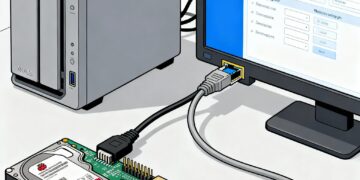Welcome back to our control theory adventure! Over the last four sessions, we’ve built up an impressive theoretical toolkit. We’ve explored the core concepts of feedback, met the powerful PID controller that will serve as our robot’s brain, and deciphered the kinematic equations that act as its rulebook for movement.
The theory is set. The blueprints are drawn. Now, it’s time to get physical.
Today, we transition from the world of ideas to the world of hardware. We’re going to walk through all the essential components you’ll need to bring our mecanum robot to life. Think of this session as our official shopping list—a guide to the nuts, bolts, and electronic guts of our machine.
1. The Brain: The Microcontroller
Every robot needs a brain, a central command unit that runs the code, reads the sensors, and makes decisions. In robotics, this role is filled by a microcontroller, a tiny, self-contained computer on a single chip. 1
For a beginner-friendly project like this, there are a few excellent choices: 1
- Arduino (e.g., Uno, Mega): The Arduino is the gold standard for beginners. It’s known for its simplicity, robust community support, and ease of use. It’s more than capable of handling the four PID loops and kinematics for our project. 1
- ESP32: This is a more powerful option that comes with built-in Wi-Fi and Bluetooth. It offers more processing power and memory, which can be useful if you plan to expand the robot’s capabilities later on. 1
Our Recommendation: Start with an Arduino Mega 2560. While an Uno could work, the Mega provides many more input/output (I/O) pins, which will make connecting our four motors and four encoders much less of a headache.
2. The Muscle: Motors & Motor Drivers
The microcontroller is the brain, but it can’t move the robot on its own. It needs muscle. This comes from two key components working together: the motors that turn the wheels and the motor drivers that give them the power to do so.
Motors: DC Motors with Encoders
For our project, the choice of motor is critical to our learning goal. We will be using geared DC motors that come with built-in encoders.
You might see many DIY projects using stepper motors, which are great for their high torque at low speeds and simple open-loop control. 4 However, they can miss steps and lose their position without you knowing. 4
A DC motor with an encoder, on the other hand, is perfect for our mission. The motor provides the rotational force, and the encoder is a sensor that constantly reports back to the microcontroller exactly how fast and in which direction the motor shaft is turning. This feedback is the entire basis of the closed-loop PID control system we’ve been learning about. 7 It allows us to
know if a wheel is slipping or struggling and correct for it in real-time.
Our Recommendation: Four 12V DC geared motors with integrated quadrature encoders. Make sure they have enough torque to move the weight of your planned chassis.
Motor Drivers
A microcontroller’s I/O pins can send signals, but they can’t supply the high current our 12V motors need. Trying to power a motor directly from an Arduino would destroy it instantly. We need an intermediary: a motor driver.
The motor driver takes low-power control signals (like “speed” and “direction”) from the microcontroller and translates them into high-power outputs for the motors. For DC motors, the most common type of driver is an H-Bridge.
Our Recommendation: Two L298N Motor Driver Modules. Each L298N can control two DC motors, so two of them are perfect for our four-wheel-drive robot. They are inexpensive, widely available, and easy to interface with an Arduino. 1
3. The Skeleton: The Chassis
The chassis is the physical frame of the robot. It’s the skeleton that holds all the other components together. 8 You have a lot of creative freedom here, and you can use a variety of materials: 9
- Wood/Plywood: Cheap, strong, and very easy to work with using basic tools. 9
- Acrylic/Plexiglass: Looks great and is also easy to cut and drill. 9
- Metal (Aluminum): Very strong and durable, but harder to work with without specialized tools. 9
- 3D Printed: If you have access to a 3D printer, you can design a fully custom chassis. 11
Our Recommendation: Start with a sheet of 1/4-inch plywood or a sheet of acrylic. Before you cut anything, lay out all your components (microcontroller, drivers, battery, motors) to make sure everything fits. 8 Remember to leave space for wiring!
4. The Power Source: The Battery
Choosing a battery is about balancing three things: voltage, capacity, and safety.
- Voltage (V): This must match the requirements of your components. Our motors are 12V, and our Arduino can be powered by 7-12V. A battery in the 11-12V range is ideal. 12
- Capacity (mAh or Ah): This is the battery’s fuel tank. A higher capacity means a longer runtime, but also a heavier battery. You’ll need to estimate the current draw of your four motors under load to choose a capacity that gives you a reasonable runtime (e.g., 15-30 minutes). 12
- Chemistry: The most common types for robotics are NiMH and LiPo. 14
- NiMH (Nickel-Metal Hydride): Very safe, reliable, and forgiving. A great choice for beginners. 14
- LiPo (Lithium-Polymer): Much lighter and can deliver power much faster, making them the choice for high-performance robots. However, they are dangerous if mishandled. They require a special charger and must be protected from physical damage or over-discharging to prevent fire. 14
Our Recommendation: For absolute beginners, a 12V NiMH battery pack is the safest option. If you are comfortable with the safety precautions, a 3S (11.1V) LiPo battery with a capacity of 2000-5000mAh will give you better performance. ALWAYS use a dedicated LiPo balance charger and read all safety instructions.
Your Complete Shopping List:
| Component | Quantity | Recommendation | Purpose |
| Microcontroller | 1 | Arduino Mega 2560 | The robot’s brain. |
| Mecanum Wheels | 1 set (4) | 60mm or 80mm diameter | The special wheels that allow omnidirectional movement. |
| DC Motors | 4 | 12V DC Geared Motor with Encoder | The muscle that drives the wheels. |
| Motor Drivers | 2 | L298N Module | To safely power the motors from the microcontroller. |
| Battery | 1 | 12V NiMH pack or 3S (11.1V) LiPo | To power the entire robot. |
| Chassis Material | 1 | Plywood, Acrylic, or similar | The robot’s frame. |
| Misc. | — | Jumper wires, screws, nuts, bolts | To connect everything together. |
What’s Next?
You have your shopping list! The next step is to acquire the parts. Once you have everything laid out on your workbench, we’ll be ready for the most exciting phase yet: assembly. In our next session, we will walk through how to build the chassis, mount the motors, and wire all of our electronic components together. It’s time to bring our robot to life!




































